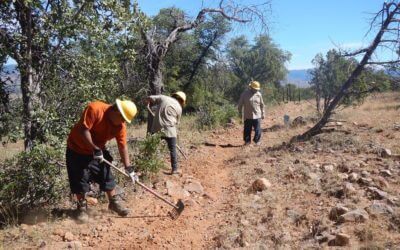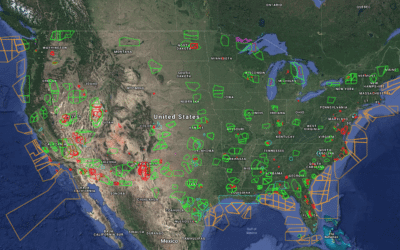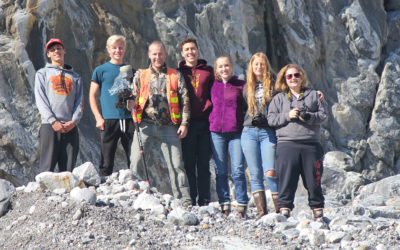© Wayne Wu Ying / Wild Wonders of China
Stewardship and Science in a Changing World
Editorial Perspectives
April 2018 | Volume 24, Number 1
The framing of any discourse within the concept of “a changing world” certainly takes on the risk of being cliché. One could argue that change is inevitable, especially across the dynamic and interconnected landscapes of wilderness and protected areas. However, organizations and institutions consistently utilize the perspective of a changing world to foster discussion, analysis, collaboration, and advocacy. It is a symbol that invokes an immediacy and relevancy for the complex sociopolitical and ecological challenges that professionals must consistently address in wilderness stewardship and conservation. Therefore, it seems appropriate for the direction of the International Journal of Wilderness to enter 2018 in the context of “a changing world.”
In 2017, IJW began an online publishing format. This format will continue in 2018 as we seek to reach our diverse audience in multiple ways that are consistent with current professional and academic dissemination of science and stewardship. We also have the opportunity to expand our social media presence and outreach by changing how we provide information and content to practitioners, scientists, advocates, and stewards. Plans include providing open access via the IJW website to the tables of contents, editorials, and the “Soul of the Wilderness” for the current volume. It may include videos, slideshows, rejoinders, and other forums for peer-review manuscripts and featured manuscripts for IJW subscribers. Through these changes, it is our goal to provide ongoing engagement, discourse, and exposure for the important topics and issues raised by the contributing authors of IJW and its valued readership.
It is also important to recognition and thank Dr. Chad Dawson for his immense and ongoing contributions to IJW as Editor-in-Chief. As I take over the role in 2018, I cannot thank Chad enough for his mentorship, dedication, and tireless efforts. He has provided a forum that supports young wilderness professionals and scholars, an atmosphere for civil discourse and debate, and a voice for so many individuals in this “changing world”. We sincerely thank you Chad for all that you do to champion wilderness and wild places!
In the December 2017 issue, Steve Chesterton and Alan Watson compiled a special issue in recognition of the 50th anniversary of the US Wild and Scenic River Act, being celebrating in 2018. That issue examined topics that spanned from rewilding rivers and ecosystem-based resilience to the role wild and scenic rivers have in the conservation of aquatic biodiversity. In this issue of IJW, we take the opportunity to build upon that “watershed moment” for river conservation and science by including additional papers from that special issue. Steve Carver utilizes GIS-based approaches to examine the global distribution of wild rivers. Zdenka Křenová discusses canoeing the Vltava River on the Czech-German Border. Peng Li describes international collaboration and support for the designation of the Quigzhu National Protected River in China.
This issue also compiles several papers that speak to our changing world. Roger Kaye discusses untrammeled wild and wilderness character in the time of the Anthropocene. Reyn Hutten describes citizen science efforts in monitoring glacial recession in Alaska. Finally, we have Gregory Hansen highlighting the emergence of the next generation of Native Youth Corp programs.
ROBERT DVORAK is editor-in-chief of IJW and professor in the Department of Recreation, Parks, and Leisure Services Administration at Central Michigan University: email: dvora1rg@cmich.edu
Read Next
Next Gen Native Youth: The Emergence of Native Youth Corps Programs
Native youth engagement not only delivers huge payoffs to our Native youth and public lands, it also ultimately fosters the building of positive relationships that absolutely must exist.
Military Aircraft Wilderness Overflights: Mitigating Their Impact
Military aircraft overflights can cause negative impacts to wilderness areas and users, however the military has a requirement to maintain aviation readiness.
Recession of Shakes Glacier in Southeast Alaska
The objective of this study was to determine the pattern of terminal recession for Shakes Glacier over the past 50 years, and to identify variables that affect the rate of terminus recession.



